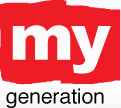
In Europe, policies that promote young people are too fragmented and short-lasting, and they also suffer from being unilaterally directed towards a single target when the diversity of the challenges calls for integrated measures. For more than two and a half years, the twelve partner cities in the URBACT project My Generation worked to identify effective local policies in three areas: giving disadvantaged young people more access to social services already in place in cities; creating bridges between training, education and the business world; and improving coordination among the various players and including young people in the decision-making process.
Main Results
One major conclusion: Young people must be involved in formalising the actions and policies that concern them.
Although the partner cities in the My Generation project are facing different challenges, they all arrived at the conclusion that young people must become real co-creators of the solutions that are implemented. This lesson underlies all the other conclusions and implies changing usual ways of thinking.
My Generation partners applied this principle through a number of actions:
- By opening up new prospects for young peoples’ aspirations and for their lifestyles
- By promoting their involvement in all steps of the project
- By opening up access to positive activities, career alternatives and by enabling them to meet other young people who have overcome similar issues
- By promoting cross-collaboration among the various players and services, particularly associations, education, businesses and public service
- By developing and disseminating good practices in the areas of commitment and partnership
- By creating tools that support the above measures
- By basing these measures and tools on local action plans and on effective and adequate strategies
Recommendations for developing policies and activities that promote the positive potential of young people:
- Make young people the co-creators of the projects:
For My Generation, the partner cities surrounded themselves with young people at every stage of their project. At every moment and for all their activities, the cities asked the following questions: How committed are the young people? How can this be improved? In order to promote contact and create conditions for co-creation, it was necessary to rethink the way the work sessions were being led, as well as the activities and communication tools, the way of making them active, creative, amusing, and of highlighting all the senses.
- Building an approach based on young people as resources:
Young people are often perceived as a “problem”. Yet they are a key resource in co-creating projects. During My Generation, it proved very fruitful to have capitalised on the skills they have acquired informally. Associations, education and the business world should get organised to make better use of the skills acquired in everyday life, be they music, dance, sports, computers, multimedia, or others.
- A multi-player approach for better partnerships:
Nobody can resolve such complex societal challenges alone. The entire My Generation project is based on building partnerships among players that work in the field promoting the cause of young people. All the work meetings included young people, professionals, inhabitants, entrepreneurs and elected officials.
- A multi-method approach:
Young people are rather closed to traditional communication methods and it is indispensable to use other media (action, dialogue, movement, dance, music, images, video). Throughout the My Generation project, the cities emphasised real stories, ambassadors and mediators, champions and models the young people could use as role models.
- Facilitate an active transition:
It is not enough to convince young people that they can change their life, one also needs to offer them the possibility to do so and to support them. It is easy to break the virtuous circle that leads from inactivity to self-confidence, and this is why it is necessary to use a ‘sponsor’ who also comes from the younger generation, or who can be identified as a role model, in order to serve as a mediator.
- Develop a holistic policy based on good practices:
The policies implemented by the cities to promote young people should cover all fields of actions: young people in situations of failure, education, employment and business creation. My Generation partners developed a road map for local policy and for activities to roll out, which identifies good practices as well as phases of critical transition.
Read more:
- My Generation Project mini-site - URBACT website
- Zoom on Riga - URBACT website
- My Generation Final Report on Outreach - PDF
- My Generation Final Report on Transition to working life - PDF
Events
| M | T | W | T | F | S | S |
|---|---|---|---|---|---|---|
|
|
1
|
2
|
3
|
4
|
5
|
6
|
|
7
|
8
|
9
|
10
|
11
|
12
|
13
|
|
14
|
15
|
16
|
17
|
18
|
19
|
20
|
|
21
|
22
|
23
|
24
|
25
|
26
|
27
|
|
28
|
29
|
30
|
|
|
|
|

